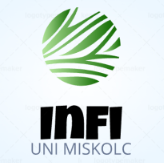| Both sides previous revisionPrevious revision | |
| tanszek:oktatas:techcomm:information_-_basics [2024/10/07 07:07] – knehez | tanszek:oktatas:techcomm:information_-_basics [2025/09/08 18:58] (current) – knehez |
|---|
| |
| Explains different types of sciences—inductive, deductive, and reductive—and their respective logical methods. It highlights how these approaches are applied in fields like physics, mathematics, and technical sciences. | Explains different types of sciences—inductive, deductive, and reductive—and their respective logical methods. It highlights how these approaches are applied in fields like physics, mathematics, and technical sciences. |
| | |
| | ---- |
| |
| [[tanszek:oktatas:techcomm:Information - Basics:Scientific method]] | [[tanszek:oktatas:techcomm:Information - Basics:Scientific method]] |
| |
| Outlines the steps of the scientific method: observation, defining the problem, formulating a hypothesis, making predictions, conducting experiments, and verifying results. It emphasizes the importance of falsifiability, reproducibility, and empirical verification in scientific progress | Outlines the steps of the scientific method: observation, defining the problem, formulating a hypothesis, making predictions, conducting experiments, and verifying results. It emphasizes the importance of falsifiability, reproducibility, and empirical verification in scientific progress |
| | |
| | ---- |
| |
| [[tanszek:oktatas:techcomm:Information - Basics:Basic model of Communication]] | [[tanszek:oktatas:techcomm:Information - Basics:Basic model of Communication]] |
| |
| Explains the basic model of communication, involving multiple participants exchanging information. The process starts with the sender encoding a message, then transmitted through a communication channel that may introduce noise. | Explains the basic model of communication, involving multiple participants exchanging information. The process starts with the sender encoding a message, then transmitted through a communication channel that may introduce noise. |
| | |
| | ---- |
| |
| [[tanszek:oktatas:techcomm:Information - Basics:Basic communication structures]] | [[tanszek:oktatas:techcomm:Information - Basics:Basic communication structures]] |
| |
| Describes four basic communication structures: Point to Point, Star, Bus, and Tree. | Describes four basic communication structures: Point to Point, Star, Bus, and Tree. |
| | |
| | ---- |
| |
| [[tanszek:oktatas:techcomm:Information - Basics:Information]] | [[tanszek:oktatas:techcomm:Information - Basics:Information]] |
| |
| Page explains the concept of information, describing it as a fundamental scientific idea. It presents a multi-level model for understanding information through various approaches: statistical, syntactical, semantic, pragmatic, and apobetical. | Page explains the concept of information, describing it as a fundamental scientific idea. It presents a multi-level model for understanding information through various approaches: statistical, syntactical, semantic, pragmatic, and apobetical. |
| | |
| | ---- |
| |
| [[tanszek:oktatas:techcomm:Information - Basics:Description of Information]] | [[tanszek:oktatas:techcomm:Information - Basics:Description of Information]] |
| |
| Provides an overview of how information is described through mathematical sets, including defining set elements, their relationships, and cardinality. It introduces both classical sets and fuzzy sets | Provides an overview of how information is described through mathematical sets, including defining set elements, their relationships, and cardinality. It introduces both classical sets and fuzzy sets |
| | |
| | ---- |
| |
| [[tanszek:oktatas:techcomm:System:System]] | [[tanszek:oktatas:techcomm:System:System]] |
